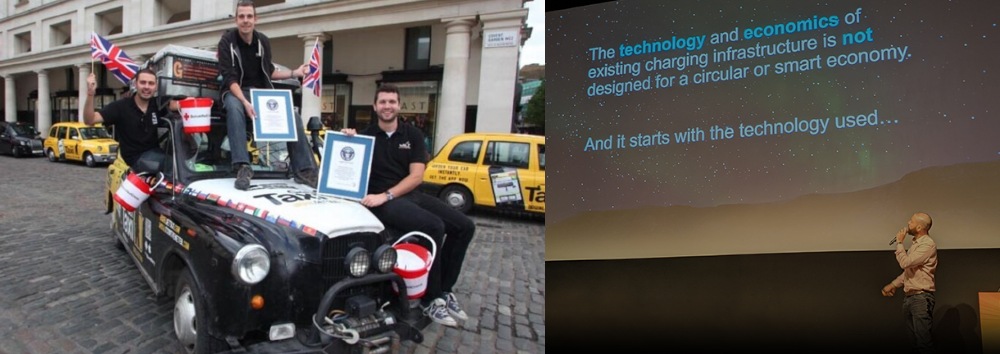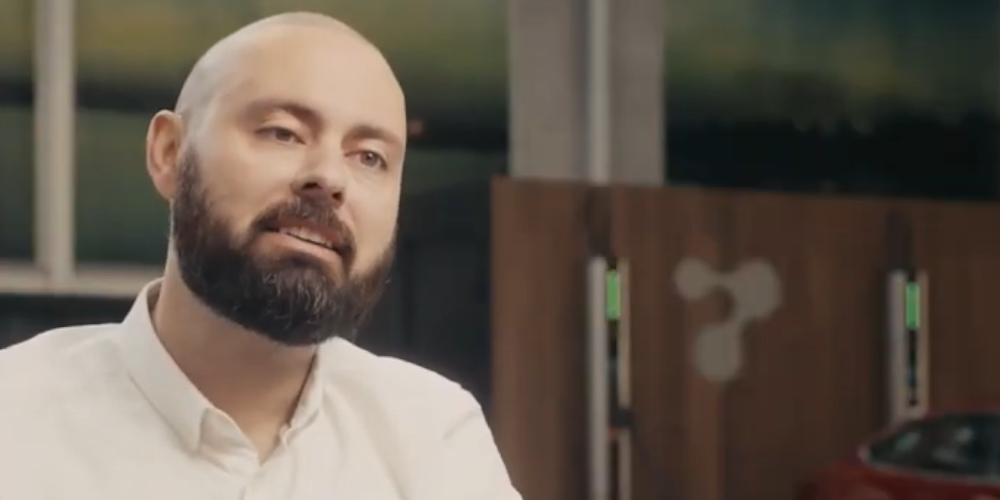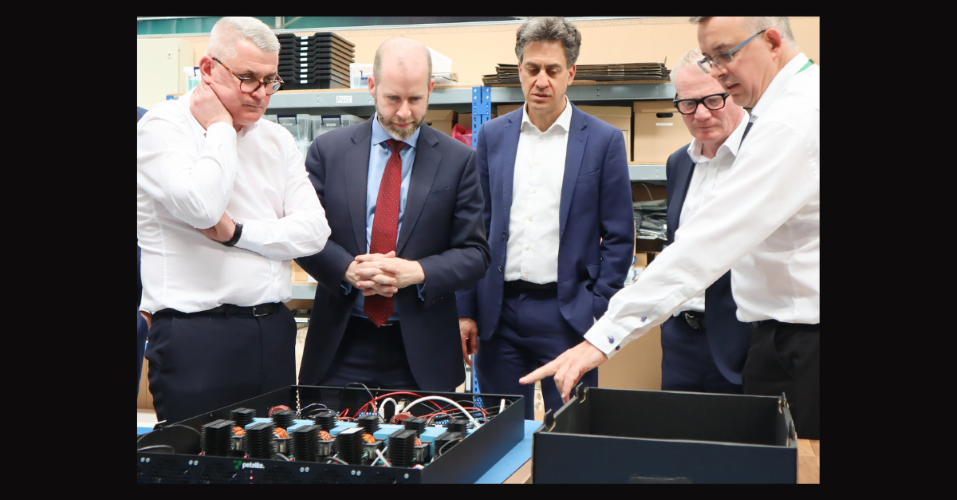We interviewed our founder Leigh Purnell to find out what set Petalite on the road to success…
When and why did you found Petalite?
I started Petalite in 2014 after leaving GE Energy. I soon learned there was an emerging market in rapid electric vehicle charging infrastructure and there was a window of opportunity to innovate within the market. As a clean technology enthusiast, I naturally have a passion for energy solutions, especially those that support and improve environmental sustainability. I could see back then that there would be a huge demand for electric vehicle charging infrastructure, but the charging industry lacked innovation.
We looked specifically at the technology inside the chargers being installed. I recognised that the whole EV charging industry was reliant on one standard type of charging technology called ‘full bridge’. This is also used to power the world of computers and servers, however charging a battery electric vehicle is a completely different challenge. I knew that if we continued deploying DC chargers featuring this technology, the result would be issues in reliability, lifetime and return on investment for customers. Unsurprisingly this is what we are seeing today. I wanted to change the charging technology itself, which in turn would support a sustainable and economical business model.
Since 2019, the industry has witnessed a rapid increase of electric vehicle adoption which all feature the standard ‘full bridge’ charging technology.
Petalite began while the EV charging industry was in its infancy. We started before DC chargers had been installed at scale and experiencing the issues they have today. This gave us the luxury of time to truly innovate a disruptive charging technology from the ground up, watching how the industry adapted to these challenges (or not) and we had 100{b225bb411ebffe43df88c19da6a280ef64f7b1447a292182890b89dcc5367a86} of our focus on that.
How did you approach solving the issues experienced in first generation EV charging?
Firstly, it was important to focus on simplified charging technology and infrastructure compared to what the rapid DC market was offering. We had to make sure EV charging became economical and sustainable for the future, to do this we started with a completely novel design that we call SDC.
This started with the common design of a DC charger’s internal modularity hardware. Standard DC chargers use specialised parts from sole sourced suppliers and this means they can be costly to manufacture, maintain and repair. During our R&D phase, we developed our DC charger by using globally available ‘off the shelf’ commodity parts. This means Petalite chargers are quicker and simpler to maintain, upgrade and repair.
How did your vision become a reality?
My educational background in mechanical engineering and business enabled me to create a viable DC charging product. With this prototype, I could apply for entrepreneur support, including Aston University’s BSEEN graduate programme. I raised funds through private investment both Angel and VC, and won multiple Innovate UK grants.
These all helped me to employ a team of engineers, some highly experienced and some recent graduates. A key hire was Dr Stavros Pressas as my CTO, a highly experienced academic in power electronics who shared and really understood the vision. Over several years, together we created a reliable DC charging solution we call SDC.
From 2021, I began to establish the business team. They all needed to share my vision for reliable rapid charging, but many hadn’t even experienced sitting in an EV, let alone charging one. That’s how much this industry was in it’s infancy in 2021. So, where I couldn’t explain the issue on an electrical engineer’s level, I needed to show them. I ensured they were all exposed to the charging experience first hand.
What traits did you need to realise your vision and overcome obstacles?
I am quite a determined person; you’ve only got one life to live. If you want to make a big impact in the world you need to be either a big cog in a small machine or need to be making that machine. I am no stranger to mentally and physically challenging myself through business and my own hobbies. I’m a keen skydiver and more recently began freediving so I thrive on extreme situations.
In February 2011, with my university friends Paul Archer and Johno Ellison, we broke two Guinness World Records. The first record was for the ‘longest journey by taxi’. We travelled over 43k miles around the world for fifteen months covering four continents and fifty different countries. The second record we set was for the highest altitude reached by a car. It reached 17,143ft above sea level when we travelled to China. It was an amazing experience, meeting so many different people and experiencing vastly different cultures. It was physically and mentally challenging but together we raised money for the British Red Cross and it’s a time of my life that I’m incredibly proud of. I think it triggered my ambitious mindset to launch Petalite.
Any advice to engineers who think they have a radical solution to an existing problem?
Talk about your idea. There are so many founders who don’t talk about their ideas to anyone. They spend years in captivity hiding in a corner and then appear realising somebody else invented it.
Address what you lack. There is no way you can do it all. You can continue to learn new skills, improve on the ones you have and if those don’t apply, plan to hire the skills to help grow your idea. When I received my first investment, I hired Dr Stavros Pressas as my CTO. I needed his skill and knowledge, but also his many years of experience. I didn’t have that, I couldn’t invent that. Without him, I could not succeed. If you don’t address what you lack and accept you can’t progress without it, then you’re in denial and will likely end up with a radical idea written on a napkin and bankrupt.
Embrace perseverance and don’t lose your drive. A lot of it is to do with your own ability to persevere through the toughest times. Like myself, some of the most successful founders I know were bullied at school, which resulted in telling ourselves “One day I’m going to prove you all wrong”. This perseverance was key to the mindset I have today.
Test your idea. The Lean Startup is a great guide for that. The book overall says, “just keep testing”, “have an assumption – test it”. Testing is critical for engineers; it is a huge thing and I’ve had hundreds of ideas that I’ve constantly tested. I would say 99{b225bb411ebffe43df88c19da6a280ef64f7b1447a292182890b89dcc5367a86} were rubbish. With Petalite, I started out with one idea, to create a reliable form of charging technology. But first, I started small, creating rapid smartphone chargers. It was a case of test, test, test until I got to the stage where I couldn’t make a small smartphone rapid charger without occurring huge costs, so I switched my focus to an emerging market, electric vehicle chargers. Petalite wouldn’t be here today if we hadn’t explored the smartphone charger market. We needed to make mistakes because what we didn’t know, we learned, then improved and tested over and over again until we got it right.





